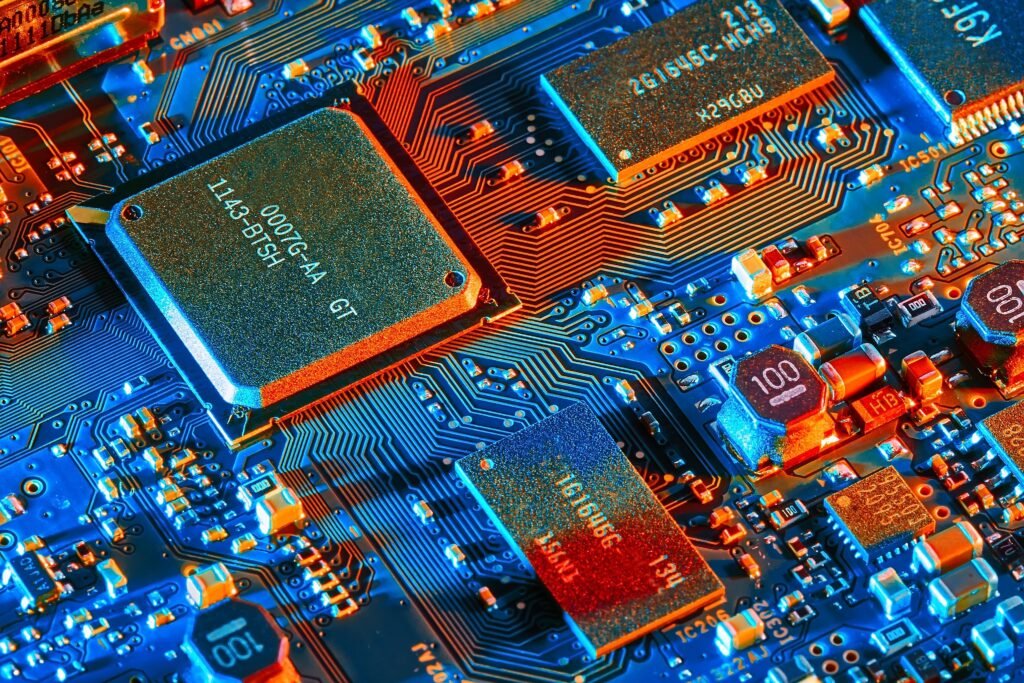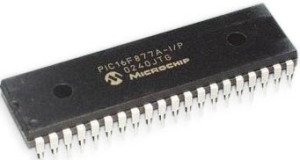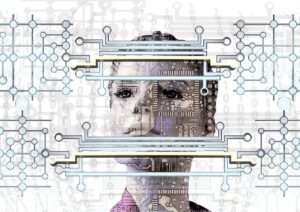
Microcontrollers are unsung heroes in the world of embedded systems, giving the required strength and intelligence to many objects we use on a daily basis. These gadgets include common household items, wearable technology, sophisticated industrial automation systems, and Internet of Things (IoT) applications. We will delve into the fascinating world of microcontrollers in this blog article, looking at its architecture, uses, and significant influence across numerous industries.
It is crucial to know the architecture of microcontrollers in order to appreciate their importance. Microcontrollers are specialized integrated circuits created for specific functions, as opposed to general-purpose computers. They are made up of an integrated microprocessor chip that serves as the brain, coupled with memory, input/output peripherals, and other crucial parts. Microcontrollers are incredibly effective, economical, and suited for use in areas with limited resources thanks to their small size.
Microcontrollers are widely used in many different fields. They supply energy to a wide range of consumer electronics products that we use on a regular basis. Microcontrollers offer the intelligence necessary to manage and monitor these devices, allowing additional functionalities and improving user experience. They are used in everything from our digital watches and smart thermostats to household appliances like microwave ovens and refrigerators.
Microcontrollers are widely used in the field of wearable technology as well. These tiny gadgets, which range from fitness trackers to smartwatches, have microcontrollers that interpret sensor data, control battery usage, and enable wireless connection while keeping a small form factor.
Another industry where microcontrollers are essential is industrial automation. In industrial facilities, they offer accurate control and monitoring of machinery and equipment, assuring effective operations and minimizing human interaction. Complex automation processes are made possible by microcontrollers incorporated into programmable logic controllers (PLCs), which helps industry increase production and maintain quality.
Microcontrollers have grown in importance with the introduction of the Internet of Things (IoT). The Internet of Things (IoT) is a network of interconnected devices that interact and share data. The main processing units of IoT devices are embedded microcontrollers, which make it easier to gather data, analyze it, and communicate with other IoT devices and cloud services. Microcontrollers are the driving force behind the Internet of Things (IoT) revolution, allowing seamless connectivity and automation in everything from smart home systems and intelligent energy management to environmental monitoring and medical equipment.
Microcontrollers have an influence across many sectors, spurring innovation and changing how firms operate. Microcontrollers are essential for engine control units, anti-lock brake systems, and sophisticated driver assistance systems in automotive applications, which improve the performance, safety, and efficiency of the vehicle.
In the medical field, microcontrollers are found in equipment like pacemakers, insulin pumps, and digital thermometers. Additionally, it offers accurate measurements, prompts responses, and improves patient care.
Microcontrollers are used in automated irrigation systems, weather monitoring stations, and animal management equipment in the agricultural sector, helping farmers. As a result, it aids farmers in raising yields, maximizing resource use, and enhancing overall effectiveness.
The number of applications is enormous and is growing. Microcontrollers are used in a wide range of industries, fostering innovation and influencing the future in everything from robotics and aircraft to security systems and renewable energy.

Understanding Microcontrollers
A CPU, memory, and peripheral interfaces are all included on a single chip in microcontrollers, which are highly integrated circuits. Microcontrollers are created as self-contained systems that can carry out pre-programmed functions independently, in contrast to general-purpose microprocessors, which depend on external components for their functioning. They are particularly well-suited for battery-operated devices since they are primarily tuned for real-time applications and have minimal power consumption.
An instruction-executing Central Processing Unit (CPU) is often found in the heart of a microcontroller. The “brain” of the microcontroller is the CPU, which does computations, logical processes, and control operations in response to program instructions. The program instructions are kept in memory, which commonly consists of Flash memory for non-volatile program storage and Random Access Memory (RAM) for temporary data storage. Thus, even when the power is switched off, the microcontroller may continue to run its program.
Input/output (I/O) ports on microcontrollers allow for communication with peripherals and other external devices. The microcontroller may be interfaced with using these ports to attach sensors, actuators, displays, and other parts. The microcontroller may get data from sensors through these I/O ports, process it with the CPU, and then send output signals to command actuators or show information on displays.
Digital input/output pins, analog-to-digital converters (ADCs), pulse-width modulation (PWM) outputs, analog-to-digital converters (ADCs), and serial communication interfaces like UART, SPI, and I2C are just a few examples of the different ways that a microcontroller’s I/O ports can be configured.
Microcontrollers can offer an efficient and small solution for embedded systems since they combine a microprocessor, memory, and I/O ports on a single chip. They simplify the design process and do away with the requirement for external components, which lowers costs and boosts dependability. Microcontrollers are also made to function in real-time settings where accurate timing and responsiveness are essential. They are ideal for time-sensitive applications because of their architecture and instruction set, which are both tuned for quick execution.
Microcontrollers have a wide range of applications because of their adaptability in many different sectors. In addition to basic consumer electronics like TV remote controls and toys, they also run more sophisticated systems like automobile control units, medical devices, industrial automation systems, and Internet of Things (IoT) gadgets. They play a crucial role in the creation of intelligent and connected devices because to their capacity to integrate computing power, memory, and I/O interfaces on a single chip.

Applications of Microcontrollers
Microcontrollers have in fact revolutionized a number of disciplines with their capabilities by finding applications in a wide variety of businesses and sectors. Let’s explore some of the prominent uses of microcontrollers in various sectors in more detail:
- Consumer Electronics: Numerous consumer electronics products, such as smartphones, digital cameras, smart TVs, and household appliances, are powered by microcontrollers. They make it possible to automate and regulate processes, which improves efficiency and the user experience. For instance, microcontrollers in smart home appliances allow for sophisticated capabilities like voice control and communication with other devices, energy management, and remote control.
- Automotive Industry: Engine Control Units (ECUs) rely heavily on microcontrollers, which are essential to the automobile sector. They optimize fuel efficiency, keep an eye on engine performance, and make sure that pollution rules are being followed. Anti-lock braking systems (ABS), airbag regulation, infotainment systems, and advanced driving assistance systems (ADAS) are further features made possible by microcontrollers. Microcontrollers are crucial for handling electric power systems, battery management, and autonomous functionalities with the growth of electric cars and autonomous driving technologies.
- Healthcare: Microcontrollers are widely used in the healthcare industry and help enhance medical technology and diagnostics. They supply energy to vital devices including pacemakers, insulin pumps, glucose meters, and imaging equipment for medical use. Medical experts may administer specialized treatments and interventions thanks to microcontrollers’ precise control, real-time monitoring, and data processing capabilities. They are essential components of laboratory equipment that support analysis, diagnosis, and research.
- Industrial Automation: Systems for industrial automation and control frequently employ microcontrollers. To monitor and manage production processes, they are incorporated into Programmable Logic Controllers (PLCs), assuring their effectiveness, precision, and safety. Microcontrollers make it possible to manage robots, machinery, and sensors in real-time, aiding process improvement, quality assurance, and preventive maintenance. Additionally, microcontrollers are used in smart buildings to automate HVAC (Heating, Ventilation, and Air Conditioning), security, and lighting systems for improved energy efficiency and occupant comfort.
These are just a few instances of the ways that microcontrollers have revolutionized different sectors. They are vital for powering cutting-edge technologies and gadgets across industries because to their adaptability, low power consumption, real-time capabilities, and integration of crucial tasks on a single chip. Microcontrollers will continue to develop as technology progresses, opening up new uses and spurring creativity across a variety of sectors.
Development and Programming
The development and programming of microcontrollers involve specialized Integrated Development Environments (IDEs) and programming languages tailored to their specific requirements. Let’s explore these aspects in more detail:
- Programming Languages: C and assembly language are the two most popular programming languages used for microcontrollers. A high-level language like C provides a decent mix of low-level control and abstraction. It offers a methodical and portable way to write microcontroller code. On the other hand, assembly language gives programmers direct access to the hardware of the microcontroller, enabling them to create code that is highly optimized for a given job. When the highest level of performance is needed or when crucial timing-sensitive processes are involved, assembly language is frequently employed.
- Integrated Development Environments (IDEs): IDEs offer a complete environment for creating, debugging, and simulating microcontroller code. A code editor, compiler, debugger, and project management tools are generally included. The features and functions of IDEs created especially for microcontroller development frequently correspond to the intended microcontroller architecture. In order to make programming easier, they could also offer libraries and Application Programming Interfaces (APIs) tailored to the microcontroller platform. The MPLAB X IDE (Microchip), Keil Vision (ARM), and Arduino IDE are a few well-known IDEs for microcontroller development.
- Software Interfaces: Through a variety of software interfaces, microcontrollers may connect with other devices. Inter-Integrated Circuit (I2C), Serial Peripheral Interface (SPI), and Universal Serial Bus (USB) are a few examples of frequently used interfaces. Microcontrollers may be connected to PCs or other USB devices through USB to exchange data or run programs. Serial communication protocols like I2C and SPI let microcontrollers connect with peripherals like sensors, actuators, displays, and other devices. These interfaces make it easier for microcontrollers and external devices to exchange data, control signals, and configuration settings.
In addition to these components, libraries and frameworks particular to the target microcontroller platform may also be used in microcontroller development. These libraries include pre-written APIs and methods that make it easier to do routine operations like managing timers, controlling I/O pins, and handling communication protocols. They facilitate the creation process and free up programmers to concentrate on the more complex logic behind their apps.

Future Trends and Challenges
Microcontrollers have an exciting future ahead of them as technology advances continue to change their capabilities. Future microcontroller trends and factors include the following:
- Increased Power and Efficiency: Powerful microcontrollers are anticipated while yet being energy-efficient. Through the integration of increasingly sophisticated and effective CPU cores, manufacturers are continually working to improve processing capabilities. As a result, microcontrollers can perform increasingly challenging jobs, execute complicated algorithms, and support cutting-edge applications.
- Enhanced Connectivity: Future microcontrollers will place a considerable emphasis on wireless connection. Microcontrollers will increasingly include connectivity options like Wi-Fi, Bluetooth, and cellular connectivity as the Internet of Things (IoT) grows in popularity. This makes it possible for microcontrollers and other devices to communicate and share data seamlessly, boosting the development of linked systems and intelligent applications.
- Security and Privacy: Keeping data secure and private becomes increasingly important as devices grow more linked. Strong security measures must be prioritized by microcontroller makers in order to guard against online threats and illegal access. Encryption, secure boot techniques, and secure communication protocols are all included in this. Additionally, it’s critical to maintain compatibility with best practices and increasing security requirements.
- Integration of AI and Machine Learning: An increasing trend is the incorporation of machine learning (ML) and artificial intelligence (AI) capabilities into microcontrollers. Devices may do local data processing, inference, and decision-making by directly integrating AI/ML algorithms and processing capabilities into microcontrollers, which lessens the need for cloud dependency and improves real-time responsiveness.
- Edge Computing: In edge computing, where data processing and analytics take place closer to the data source rather than depending only on cloud services, microcontrollers are ideally suited. Microcontrollers allow faster data analysis, lower latency, and more privacy for sensitive data because to their low power consumption and real-time processing capabilities.
- Sustainability and Energy Harvesting: The future of microcontrollers will be influenced by the desire for environmentally friendly and energy-efficient solutions. To power microcontrollers in applications with limited resources, manufacturers are looking at ways to optimize power usage and add energy harvesting strategies, such solar or kinetic energy. This encourages energy conservation and lessens the need for batteries.
- Cross-Domain Applications: Microcontrollers will continue to be used in a variety of sectors and fields. Microcontrollers will be crucial in driving a variety of applications and allowing technical improvements in various fields, from smart homes and wearables to industrial automation and healthcare.
The difficulties posed by the development of microcontrollers in the future must be addressed. Manufacturers must aggressively resolve security flaws, create strong protocols, and keep up with changing security requirements as the number of connected devices rises. To guarantee seamless integration and interoperability, compatibility across various microcontroller platforms and software frameworks must also be taken into account.


This is a good post.